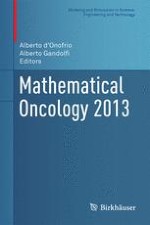2014 | OriginalPaper | Buchkapitel
A Hybrid Multiscale Approach in Cancer Modelling and Treatment Prediction
verfasst von : Gibin Powathil, Mark A. J. Chaplain
Erschienen in: Mathematical Oncology 2013
Verlag: Springer New York
Aktivieren Sie unsere intelligente Suche, um passende Fachinhalte oder Patente zu finden.
Wählen Sie Textabschnitte aus um mit Künstlicher Intelligenz passenden Patente zu finden. powered by
Markieren Sie Textabschnitte, um KI-gestützt weitere passende Inhalte zu finden. powered by
